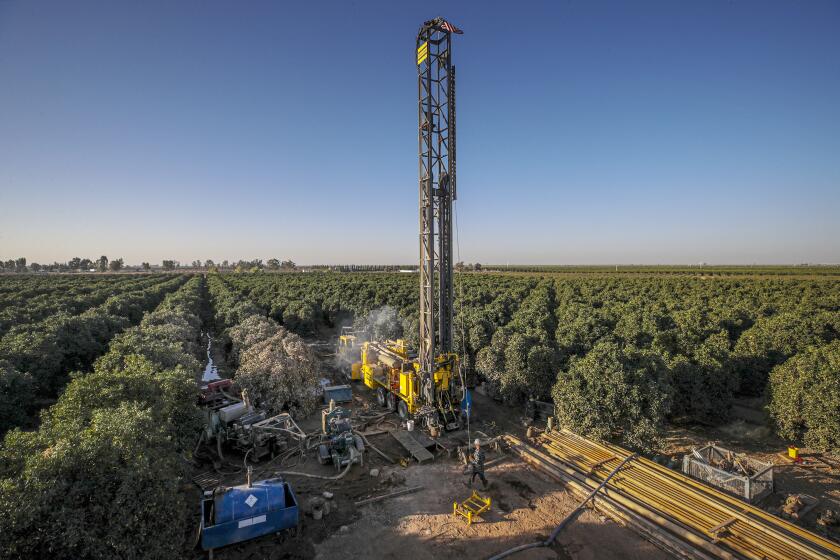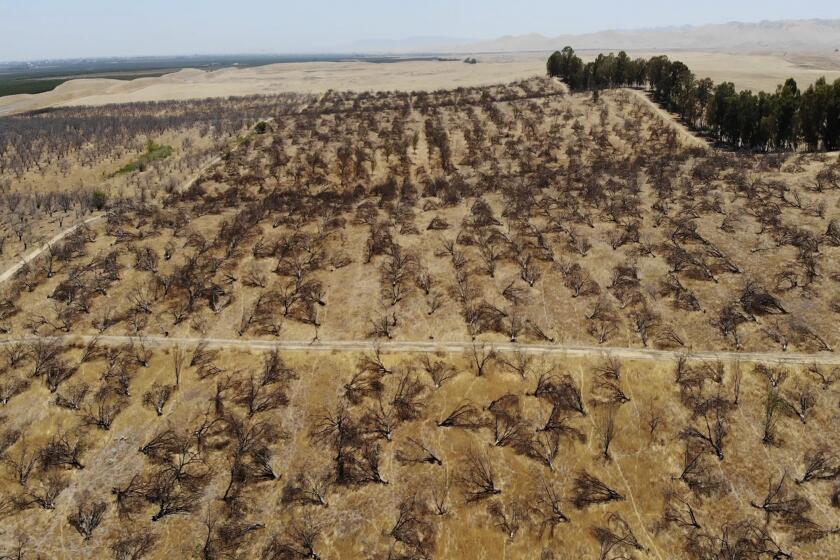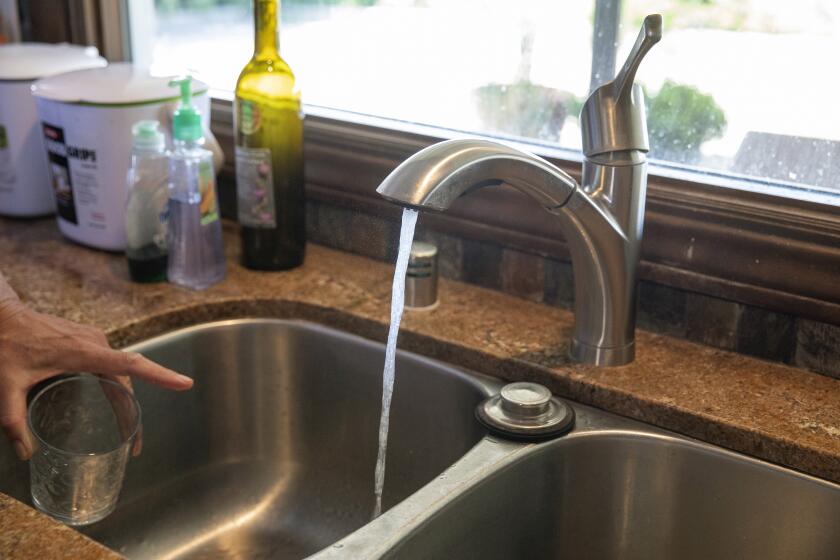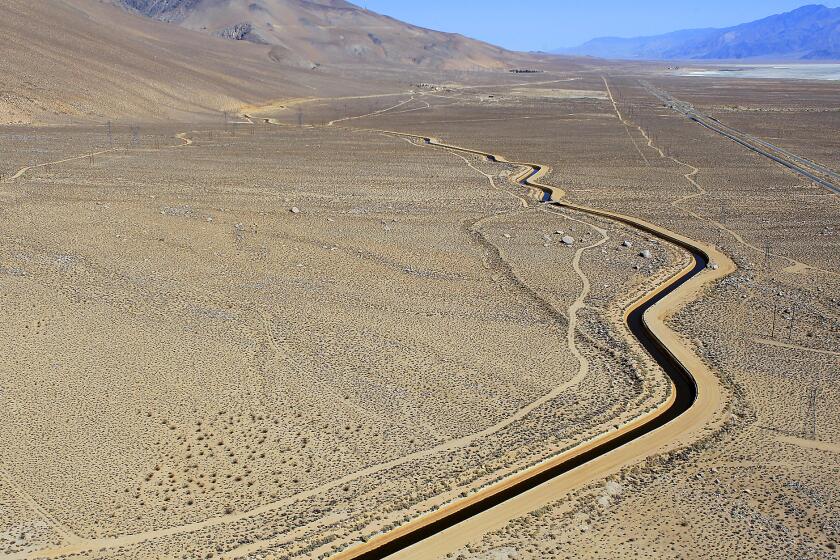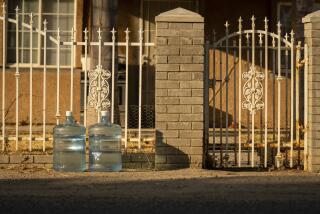Household water wells are drying up in record numbers as California drought worsens

- Share via
CORNING, Calif. — For almost four decades, water flowed faithfully from Fred and Robin Imfeld’s private well here in rural Tehama County, a region where thirsty orchards of walnuts, almonds, plums and olives stretch across thousands of acres.
But that reliable supply of household water began to sputter last year and then ceased completely this summer amid California’s driest three-year period on record.
Now, the Imfelds and other residents here are scrambling to find alternative water sources, and trucking in supplies to fill massive, portable water tanks that have sprouted up throughout the community.
“I call it a silent disaster because it’s not like hurricanes where everything is getting blown over,” Fred Imfeld, 70, said of the well failures. “It’s just like, one after another of these wells just keep popping dry, and if we have another hot summer like this year and last year, or [another year with little] rainfall, it’s going to double.”
Across California, domestic wells are drying up in record numbers because of severe drought and the overpumping of underground aquifers. The crisis has hit rural farming areas particularly hard and left some families to fend for themselves or wait years for permanent solutions as nonprofits, state water officials and well drillers struggle with a growing backlog of assistance requests.
This year, nearly 1,400 household wells have been reported dry — a nearly 40% increase over the same period last year, and the highest annual number reported since 2013, when the California Department of Water Resources launched the Dry Well Reporting System. The actual number of dry wells is likely higher because reporting is voluntary.
Despite a California law intended to end over-pumping of aquifers, a frenzy of agricultural well drilling continues in the San Joaquin Valley.
Areas with the highest number of well failures included Fresno, Madera, Tulare and Tehama counties — Central Valley regions where surface water shortages have driven growers to drill deeper and deeper irrigation wells.
“We’re probably seeing more [dry wells] now than we’ve ever seen in the past,” said Tami McVay, program director of Self-Help Enterprises, a community development organization that, among other things, operates a tank and hauled-water program for low-income families.
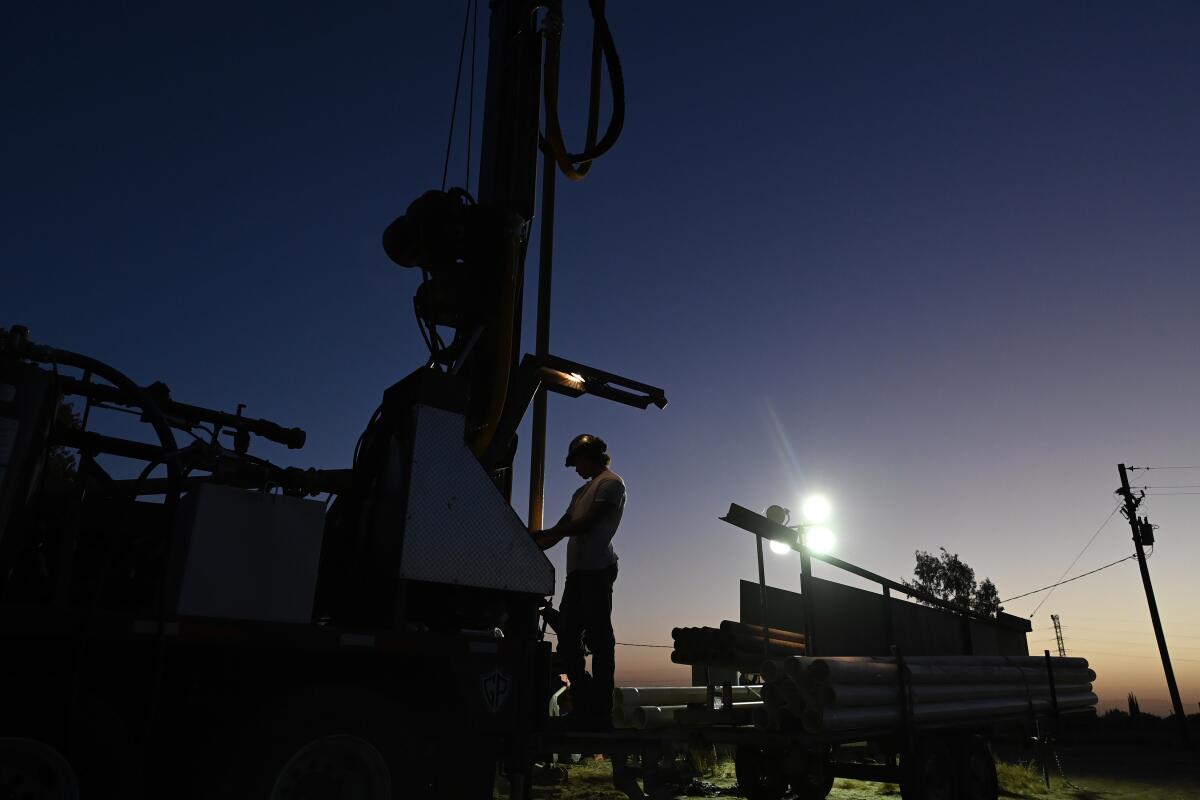
Some 1,600 households are receiving water assistance from Self-Help, and an additional couple of hundred are relying on community water tanks, she said.
Although California declared a decade ago that all residents have a right to clean, safe and affordable drinking water, the number of household dry wells has continued to rise. At the same time, families without water are waiting longer and longer for their wells to be drilled deeper, or for their homes to be connected to a public water system, because of a growing backlog.
In parts of the Central Valley, some residents have been forced to live more than five years on water hauled to temporary storage tanks, McVay said. “Tanks are not supposed to be permanent. Unfortunately, that’s how folks are having to live right now.”
Increased groundwater demand and less precipitation because of drought have forever altered the state, but several sectors will be hit especially hard.
Rural communities are particularly vulnerable to drought and water problems because they lack the finances, organization and infrastructure of urban and suburban areas. They also suffer disproportionately from water affordability issues and well contamination. Droughts and overpumping cause groundwater levels to drop, causing contaminant concentrations to increase.
“The human right to water in California exists, and yet it’s clearly not being met in many areas,” said Scott Jasechko, associate professor of hydrology at UC Santa Barbara. “And if groundwater levels continue to decline, matters will get worse before they get better.”
In wet years, most of the state’s water comes from surface sources, such as rivers, lakes and streams, while groundwater accounts for about 40% of supplies. In times of drought, however, California’s groundwater dependence rockets to 60% or more, increasing demand on aquifers. Those with shallow wells — mostly homeowners — typically run out of water first as aquifer levels drop.
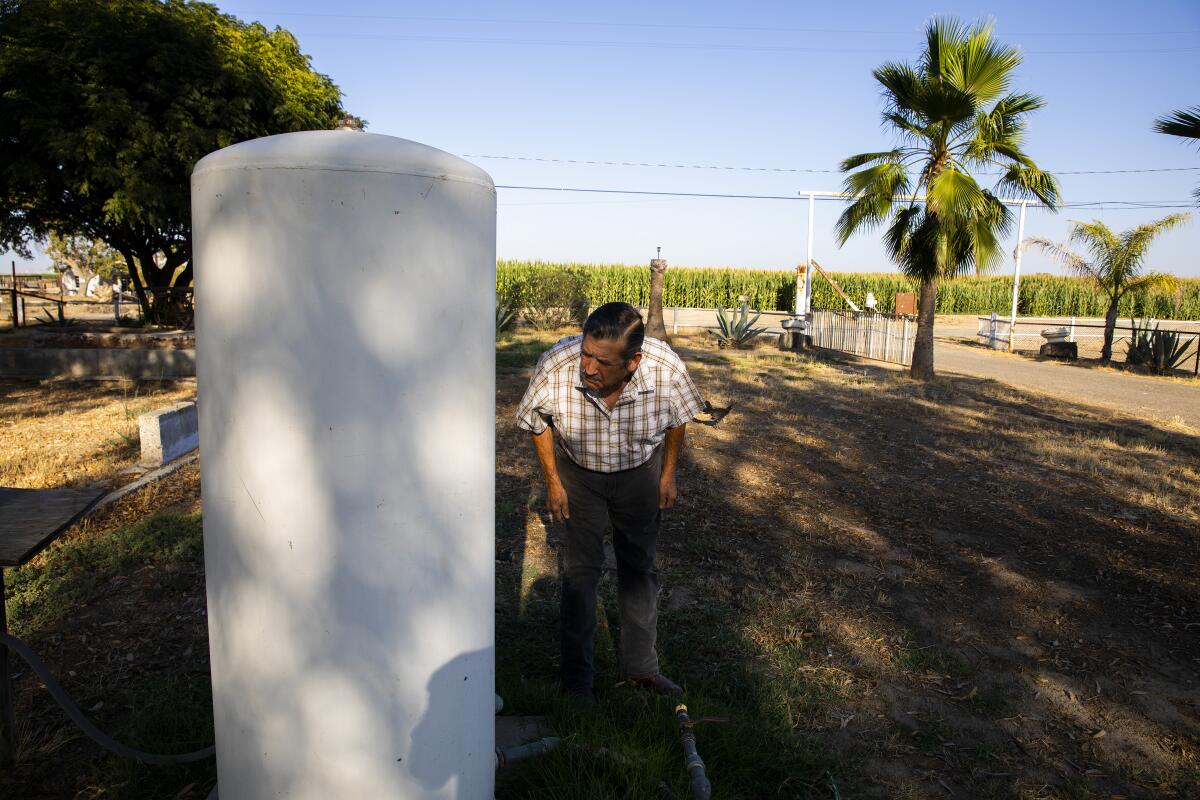

About half of the 3,700 wells monitored by the state are classified as either below normal, much below normal, or at an all-time low.
“It just gives you a sense that we are in unprecedented times with the drought,” said Steven Springhorn, an engineering geologist and technical assistance manager with the Department of Water Resources’ Sustainable Groundwater Management Office.
An estimated 15,000 domestic wells are susceptible to going dry in five years if dry conditions persist, according to state data. Fresno, Tulare, Madera, Tehama and Sonoma counties have the highest concentration of vulnerable wells.
While the historic Sustainable Groundwater Management Act is intended to regulate water availability and help mitigate water scarcity in an increasingly dry California, thousands of people risk falling through the cracks, experts say.
A 2020 study commissioned by the nonprofit Water Foundation found that under that law’s minimum water threshold plans, between 4,000 and 12,000 wells will partially or completely dry out by 2040 just in the San Joaquin Valley — affecting roughly 46,000 to 127,000 Californians who may lose access to their current water supply.
Drilling a deeper well or new well is not cheap. On average, well replacement can cost about $55,000 — far beyond the reach of those families that are already disadvantaged.
“Wells are expensive, and their cost is generally on a per foot basis,” said Justin Jenson, deputy director of public works and water resources for Tehama County. “Oftentimes people are making the decision between what they can afford and what’s long-term sustainable.”
As California enters what is anticipated to be a fourth year of drought, groundwater pumping is likely to intensify, particularly within agriculture.
The Water Rate Assistance Program, which Gov. Gavin Newsom vetoed last month, would have created a water affordability program for low-income households.
“Everybody’s sort of been scrambling over what little water there is,” said Ari Neumann, director of community and environmental services for Rural Community Assistance Corp. “And whoever has the deepest well gets the water.”
As global warming stokes increasing aridification across the American Southwest, California is struggling to overhaul its increasingly outdated water infrastructure.
This year, Gov. Gavin Newsom signed an executive order meant to protect Californians who rely on groundwater for their everyday needs. The order requires local well permits to align with groundwater sustainability before being approved.
And last month, Department of Water Resources officials approved a new round of funding for the Small Community Drought Relief Program. Some $44 million will be distributed to 23 projects in Tehama, Fresno and other counties vulnerable to water supply issues for new wells, water delivery pipelines and more storage infrastructure, and to support consolidation to increase water supply reliability.
But adaptation will take time, officials say.
“There’s going to have to be some amount of tolerance for taking time to fix these issues,” Jenson said. “The immediate response stuff can only go so far to buy time, but eventually we’ll have to put in infrastructure that resolves these issues, and that could take 10 to 20 years. Those are really the keys to actually resolving the problem as opposed to Band-Aiding it.”
That’s little comfort to those who have lost water.
With another dry year ahead, state water officials are stressing that water conservation efforts must continue in 2023.
On a recent afternoon, Fred Imfeld loaded the back of his truck with a galaxy of containers — single- and 5-gallon jugs, empty paint buckets, Clorox and cat litter bins — and drove to a friend’s house a few miles away to fill them with water.
“You definitely get to appreciate water when you do this,” Imfeld said as he uncapped the plastic jugs. “This is a pretty crude way of getting water.”
Since their well died, the Imfelds have been hauling about 100 gallons a week, sometimes more, to meet their daily needs. They use the water to flush toilets, take baths and wash dishes, and also for their dogs, goats and chickens. They’ve also stopped maintaining their pool and watched as their lawn, bamboo thickets and redwood trees have turned to shades of rust.
It’s a stark contrast to the lush green groves of walnut, almond and pistachio trees along Highway 99 to the north.
“I know we’re in a drought, but when you start pumping massive amounts of water, someone is gonna get hurt somewhere,” Imfeld said.
Times staff writer Ian James contributed to this report.
More to Read
Sign up for Essential California
The most important California stories and recommendations in your inbox every morning.
You may occasionally receive promotional content from the Los Angeles Times.
